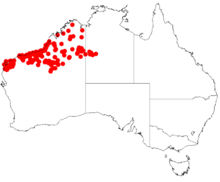
Acacia colei is a perennial bush or tree native to northern Australia and southern Asia. A common name for it is Cole's wattle. Acacia colei blooms from May through September and the flowers are bright yellow.
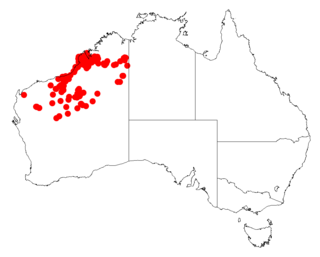
Acacia eriopoda, commonly known as the Broome pindan wattle and the narrow-leaf pindan wattle, is a species of wattle in the legume family that is native to northern Western Australia. It is also known as Yirrakulu to the Nyangumarta people.

Acacia monticola, commonly known as red wattle, gawar, curly-bark wattle, curly-bark tree and hill turpentine, is a species of plant in the legume family that is native to northern Australia.

Acacia adoxa, commonly known as the grey-whorled wattle, is a species of plant in the legume family that is native to northern Australia.

Acacia arida, commonly known as arid wattle or false melaleuca, is a shrub belonging to the genus Acacia and the subgenus Juliflorae native to Western Australia.

Acacia levata is a shrub belonging to the genus Acacia and the subgenus Juliflorae that is endemic to small arid area of western Australia.
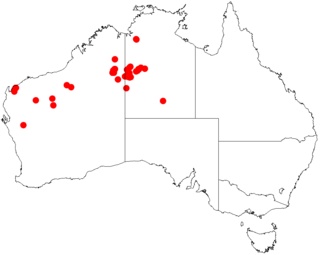
Acacia pachycarpa is a tree or shrub belonging to the genus Acacia and the subgenus Juliflorae that is endemic to central and western parts of northern Australia.

Acacia sibirica, commonly known as bastard mulga or false witchetty bush, is a tree or shrub belonging to the genus Acacia and the subgenus Juliflorae. It is native to arid areas of Australia.

Acacia wanyu, commonly known as wanyu or silver-leaf mulga, is a shrub or tree belonging to the genus Acacia and the subgenus Juliflorae that is endemic to arid parts of western Australia. The Kurrama people know it as Murruturu or Yirritiri while the Nyangumarta people know it as Wayartany.

Acacia dictyophleba, also known as the sandhill wattle, waxy wattle and feather veined wattle, is a shrub belonging to the genus Acacia and the subgenus Phyllodineae. The Nyangumarta peoples know the plant as Langkur or Lungkun and the Thalanyji know it as Jabandi.

Acacia jensenii is a shrub or tree belonging to the genus Acacia and the subgenus Phyllodineae that is endemic to north western Australia.

Acacia robeorum, commonly known as Robe's wattle, is a shrub of the genus Acacia and the subgenus Phyllodineae that is endemic to north western Australia.

Acacia sabulosa is a shrub of the genus Acacia and the subgenus Phyllodineae that is endemic to north western Australia.

Acacia maconochieana, also known as Mullan wattle, is a shrub or tree of the genus Acacia and the subgenus Plurinerves that is endemic to an arid area of central Australia.
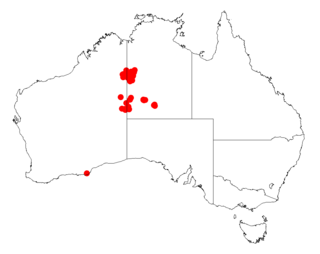
Acacia minutifolia, commonly known as the small-leaved flying-saucer bush, is a shrub of the genus Acacia and the subgenus Plurinerves that is endemic to arid areas of north western Australia.
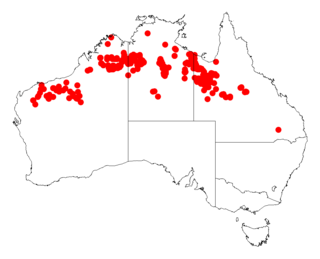
Acacia retivenea, commonly known as the net-veined wattle, is a shrub of the genus Acacia and the subgenus Plurinerves that is endemic across northern Australia.

Acacia sericophylla is a shrub or tree commonly known as the desert dogwood, desert oak or cork-bark wattle. To the Indigenous Australian people of the Pilbara, the Nyangumarta peoples, it is known as Pirrkala. The species is of the genus Acacia and the subgenus Plurinerves.

Acacia abbreviata is a shrub belonging to the genus Acacia and the subgenus Juliflorae. It is endemic to arid parts of northern Australia

Acacia cataractae is a shrub belonging to the genus Acacia and the subgenus Juliflorae that is native to northern Australia.

Acacia gracilenta is a shrub belonging to the genus Acacia and the subgenus Juliflorae that is native to north Australia.
